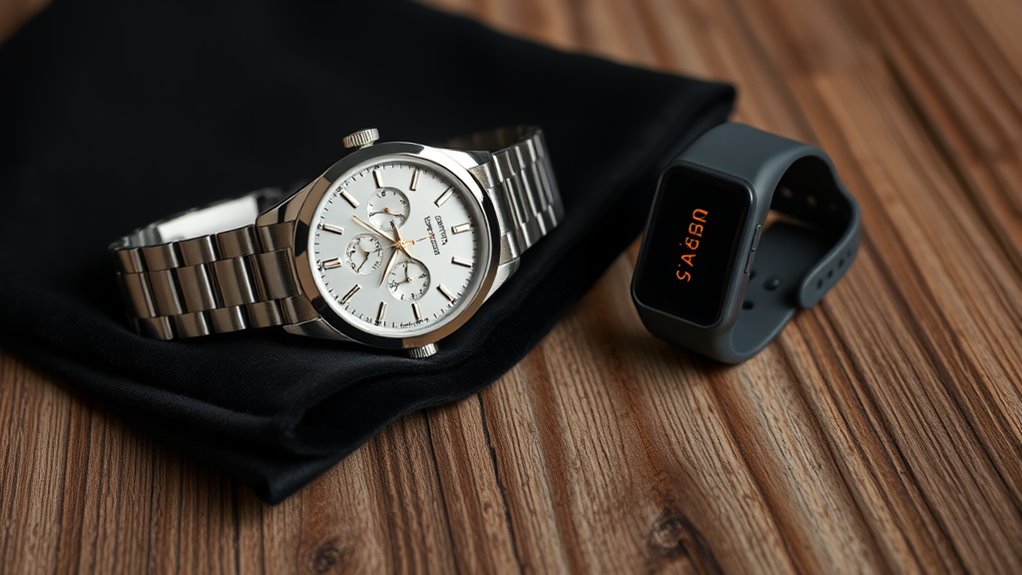Choosing between premium and budget positioning depends on your target market and brand goals. If you want to attract a niche seeking exclusivity and are willing to invest in quality, go for a premium approach. If you aim to reach a broader audience with competitive prices and high sales volume, a budget strategy works better. Both have merits and challenges; understanding these can help you find the perfect fit for your product’s success. Keep exploring to discover which approach aligns best with your vision.
Key Takeaways
- Define your target audience’s preferences for exclusivity versus affordability to determine optimal positioning.
- Emphasize luxury branding with high-quality materials for premium positioning, or streamline costs for budget offerings.
- Balance perceived value with production costs to ensure profitability and market fit.
- Use messaging that aligns with customer aspirations, highlighting prestige for premium or practicality for budget segments.
- Consider long-term brand goals and operational capabilities when choosing between luxury or budget market strategies.

When choosing between premium and budget options, you often face trade-offs that can substantially impact your experience and satisfaction. If you’re aiming to position your product effectively, understanding how luxury branding and cost efficiency play into this decision is vital. Premium products typically emphasize luxury branding, which involves creating an aura of exclusivity, quality, and prestige. This approach appeals to consumers who value status symbols and are willing to pay a premium for perceived superiority. By investing in high-end materials, meticulous craftsmanship, and compelling branding, you can elevate your product’s image and attract a niche market that seeks distinction. However, this comes with higher costs related to production, marketing, and distribution, making the overall cost structure more complex.
Luxury branding elevates product perception but involves higher costs and exclusivity.
On the other hand, budget options prioritize cost efficiency, focusing on minimizing expenses to offer products at lower prices. This strategy targets a broader audience that values affordability over exclusivity. To succeed with budget positioning, you need to streamline your operations, optimize supply chains, and find ways to deliver quality without unnecessary frills. Although you might sacrifice some elements of luxury branding, you can still build a recognizable identity centered on value and practicality. The key is to communicate your product’s benefits clearly, emphasizing affordability and reliability, which resonate with price-conscious consumers. It’s important to remember that cost efficiency doesn’t mean sacrificing quality entirely; instead, it involves smart resource allocation and process improvements. Additionally, understanding the beach body concept can help tailor your marketing message to specific customer aspirations, such as achieving a fit and healthy appearance.
Choosing between these two paths depends on your target market and long-term goals. If your audience appreciates luxury branding and is willing to pay a premium for perceived status, then positioning as a premium brand makes sense. This approach allows you to build a strong brand identity rooted in exclusivity, which often results in higher profit margins. Conversely, if your aim is to reach a larger customer base and achieve high sales volume, a budget strategy centered on cost efficiency is more appropriate. It requires careful balancing to ensure you keep costs low without compromising essential quality and customer satisfaction.
Ultimately, your choice should align with your brand vision, resources, and market demands. Whether you opt for luxury branding that emphasizes exclusivity or prioritize cost efficiency to maximize affordability, understanding these dynamics helps you position your product for the right market. Recognize that each approach has its advantages and challenges, and your success hinges on how well you tailor your strategy to meet your customers’ expectations while maintaining operational effectiveness.
Frequently Asked Questions
How Do Cultural Differences Influence Premium and Budget Product Perceptions?
Cultural nuances markedly shape how you perceive premium and budget products. In some cultures, luxury signifies status and quality, boosting consumer perceptions of premium items. In others, practicality and affordability are valued more, making budget products more appealing. You should consider these differences when positioning your products, tailoring messaging to align with local cultural expectations, ensuring your brand resonates deeply with your target market’s consumer perceptions.
What Are the Long-Term Brand Impacts of Premium Versus Budget Positioning?
You build long-term brand loyalty and customer trust when you position your product as premium or budget thoughtfully. Premium positioning often leads to stronger loyalty because customers associate higher quality with reliability, while budget positioning attracts price-conscious consumers who value affordability. Over time, consistent messaging and delivering on promises reinforce your brand’s reputation, ensuring sustained customer trust and loyalty regardless of your chosen market segment.
How Can Startups Effectively Transition Between Budget and Premium Markets?
To shift effectively between budget and premium markets, you should focus on strategic market segmentation, identifying which customer segments to target. Then, you need to implement brand repositioning by refining your messaging, visuals, and product quality to match the new market’s expectations. Keep communication clear and consistent, ensuring your brand’s value proposition aligns with the new positioning. This approach helps build credibility and minimizes customer confusion during the shift.
What Role Does Technological Innovation Play in Market Positioning Strategies?
Think of technological innovation as a lighthouse guiding your market positioning. It illuminates new pathways and helps you stay ahead of competitors. Technological advancements enable you to refine your products, align with customer needs, and create unique value propositions. By employing innovation strategies, you can differentiate your brand in both premium and budget markets, ensuring your offerings remain relevant and attractive, regardless of the market segment you target.
How Do Economic Downturns Affect Premium and Budget Product Demand?
During economic downturns, demand for luxury branding often drops as consumers tighten budgets, reducing their spending on premium products. However, some loyal customers may continue to seek exclusivity, maintaining consumer loyalty even in tough times. Budget products tend to see increased demand, as consumers look for affordability. You should focus on strengthening your value proposition and maintaining brand trust to navigate these shifts effectively, ensuring your offerings meet evolving consumer needs.
Conclusion
Ultimately, choosing between premium and budget positioning depends on your target market and brand goals. For example, imagine launching a luxury skincare line; focusing on quality and exclusivity attracts a high-end audience. Conversely, offering affordable options can reach a broader customer base, like a budget-friendly tech gadget. By understanding your audience’s needs and expectations, you can position your product effectively, ensuring it resonates and succeeds in the right market.







